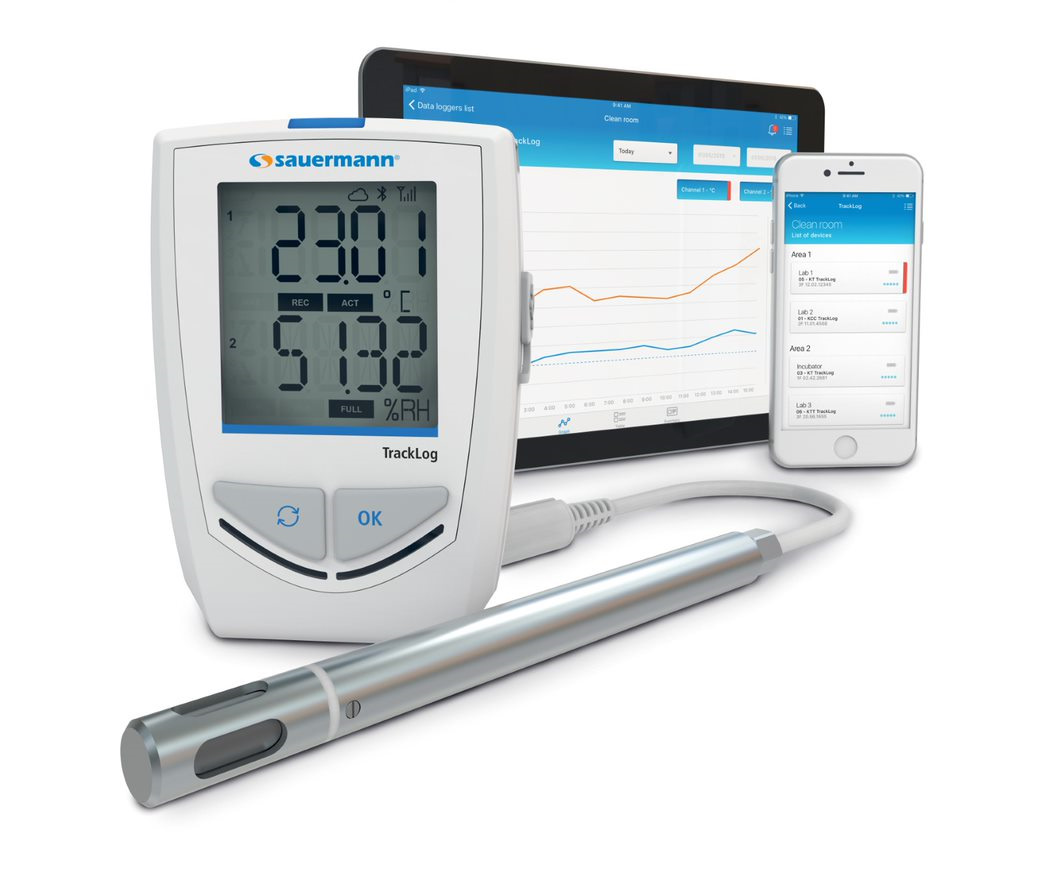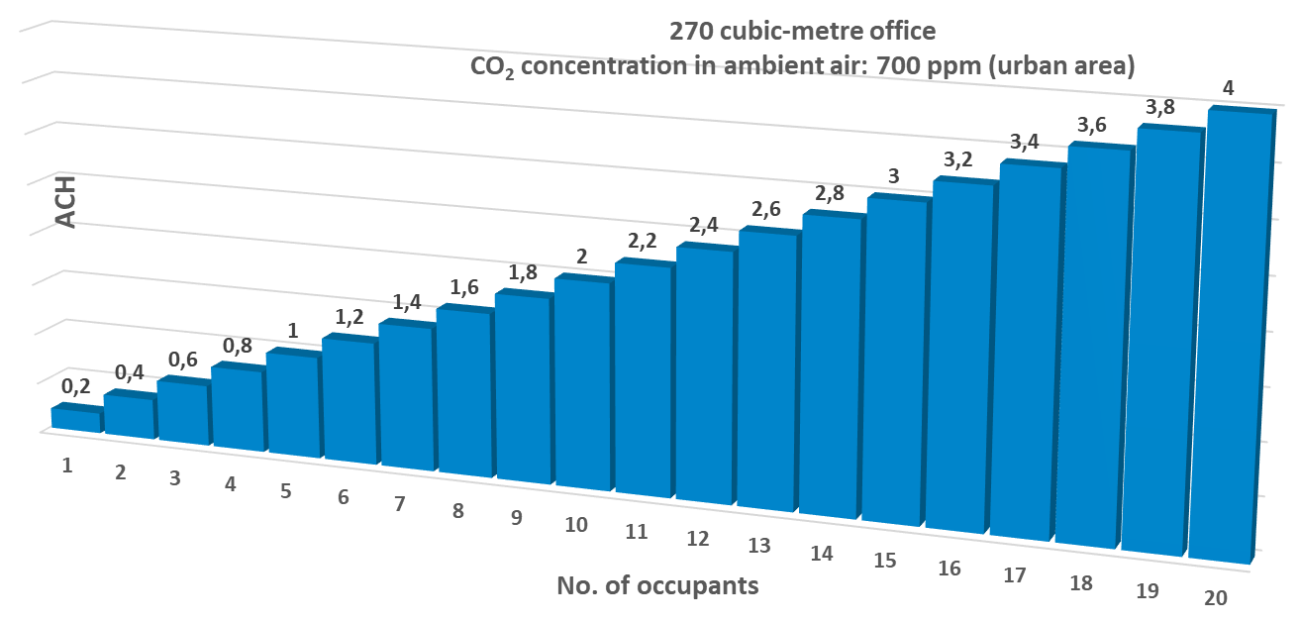The importance of indoor air quality for health is clearer than ever

In the space of a few short months, the COVID-19 crisis has revolutionised the way we think about indoor air quality (IAQ). At one time, IAQ was all about making indoor spaces comfortable for users, and for workers in particular. But these days, research into how the virus that causes COVID-19 spreads has underscored the importance of measuring indoor air parameters in buildings of all kinds – offices, schools and even our homes.
Indoor air quality has direct health implications
Poor IAQ is behind a range of symptoms that place a heavy burden on health-care systems. Excessively high or low humidity can irritate the eyes, skin and respiratory tract, and even cause allergies and asthma. Likewise, poorly controlled temperature and high CO2 levels can leave us feeling drowsy and adversely affect our concentration. And scientists have recently discovered new implications, finding that properly managed humidity reduces the risk of the virus spreading and – more importantly – that high CO2 concentration is a key predictor of contaminated indoor air because it indicates a low air change rate (ACR or ACH for Air Change per Hour).
CO2 concentration: a vital measurement in the fight against COVID-19
In France and other countries, day nurseries, schools and colleges are required to monitor CO2 concentration constantly, and all new buildings must undergo an inspection when the ventilation system is commissioned.
For an idea of the ballpark figures, here are some examples of the thresholds used when assessing CO2 concentration:
|
CO2 concentration: parts per million (ppm) |
CO2 concentration: percentage in air by volume (%) |
Typical scenario |
Possible symptoms |
|
400 ppm |
0.04% |
Open countryside (outdoor) |
None |
|
700 ppm |
0.07% |
Urban area (outdoor) |
None |
|
600 - 1,000 ppm |
0.06 - 0.1% |
Properly aerated/ventilated room |
None |
|
800 - 1,000 ppm |
0.1% |
Maximum recommended limit indoors (including for protection against viruses) 5 |
None |
|
2,000 ppm |
0.2% |
Medium-sized room, properly aerated/ventilated, containing 10 people |
Mild drowsiness |
|
2,050 ppm |
0.205% |
Air inside a fabric face covering worn by someone breathing through their nose (concentration in ambient air: 550 ppm) 1 |
Possible mild drowsiness, but breathing is heavier to compensate for the resistance of the face covering, so no impact on O2 and CO2 concentrations in the blood 2 |
|
2,100 ppm |
0.21% |
Air inside a type II R surgical face mask covering worn by someone breathing through their nose (concentration in ambient air: 550 ppm) 1 |
|
|
2,300 ppm |
0.23% |
Air inside an FFP2/KN95 face mask worn by someone breathing through their nose (concentration in ambient air: 550 ppm) 1 |
|
|
5,000 ppm |
0.5% |
EU limit for workplaces (8 hours’ exposure per day) |
Mild drowsiness |
|
Over 5,000 ppm |
> 0.5% |
Unventilated indoor space occupied by several people |
Poor concentration, mild fatigue |
|
Over 10,000 ppm |
> 1% |
Unventilated and/or industrial indoor space |
Fatigue, headache, nausea 4 |
|
Over 20,000 ppm |
> 2% |
Polluted environment (machine room, etc.) |
Toxic after a few hours |
|
45,000 ppm |
4.5% |
Air breathed out by humans (on average) |
Breathing out remains good for health ! |
|
50,000 - 100,000 ppm |
5 - 10% |
CO2 leak in a confined space |
Toxic after a few minutes, slightly pungent odour, exhaustion, headache, blurred vision, loss of consciousness |
|
Over 100,000 ppm |
10% |
CO2 leak in a confined space |
Toxic after a few minutes, loss of consciousness, risk of death |

Our instruments set the standard for ease and reliability
The existence of reliable, easy-to-use measurement instruments spanning the full range of parameters means we can now measure, control and manage IAQ.
Sauermann has 45 years of experience in air quality measurement, with demand for these instruments going through the roof since the outbreak of the pandemic in 2020. More and more customers are looking to keep CO2 concentration under constant surveillance, turning to devices such as the AQ110.
Some portable instruments such as the Si-HH3 measure the temperature and humidity in a room in just one click, exporting measurement reports via a dedicated mobile app.
Air change rate: the key to IAQ
Maintaining balanced ventilation and air conditioning systems requires an instrument such as our DBM 620 air flow meter, which can calculate the rate at which the air inside a room is replaced (known as the air change rate, or ACR). Having a constant supply of fresh air helps to keep concentrations of CO2, particulate matter, bacteria and viruses to a minimum. Our recent blog article explains just how easy it is to measure ACR using our DBM 620 instrument. Here’s a worked example:
In a city with a CO2 concentration of 700 ppm in the ambient air, maintaining the ideal level of 1,000 ppm inside an open-plan office requires an ACR of around 54 cubic metres per occupant per hour. The chart below shows the required air change rate per hour (ACH) by number of occupants in a medium-sized office (90 square metres of floor space and a ceiling height of 3 metres = 270 cubic metres):

In this example, maintaining a CO2 concentration of 1,000 ppm inside this 270 cubic-metre office with 10 occupants doing non-strenuous work (9 square metres per person) means replacing all of the air in the room twice per hour. 3
Some regulations require an ACH of more than 25 cubic metres per person in an office, but these figures often assume CO2 concentrations in outdoor air of 300-400 ppm, which is only possible in open countryside.
Someone exercising in a gym breathes out eight times more air, by volume, than a worker sitting in an office, with the exact amount depending on the level of physical exertion. The volume of air that needs changing therefore increases by the same proportion. So if we replaced the office with a gym in our example, the ACH value would rise to at least 16!

A Massachusetts Institute of Technology (MIT) website employs this kind of calculation to deliver advanced prediction capabilities, allowing users to tweak the full range of possible parameters and calculate COVID-19 transmission risk according to exposure time and mask-wearing.
Other IAQ equipment and parameters
Staying on the subject of virus protection measures, the HEPA filters fitted to air conditioning systems feature a fine mesh and therefore require particular care. Because they foul more quickly than other types of filter, they need to be monitored using differential pressure sensors. Portable devices such as our Si-PM3 and Si-AQ are useful for those measurements.

Another area where IAQ comes into play is protecting occupants against volatile organic compounds (VOCs) such as formaldehyde and other carcinogens, which are released by some types of paint and adhesive used in buildings. VOC concentrations can also be measured to a high degree of accuracy using an analyser such as our Si-AQ.
Today, governments understand the inextricable link between IAQ and health better than ever before. And they’ve come to realise how IAQ is vital to keeping national health-care systems on a firm financial footing. Meanwhile, HVAC-R professionals are fully trained in this field – and experienced in monitoring and controlling the relevant parameters. So it’s time to get serious about indoor air quality!
1 Effect of Wearing Face Masks on the Carbon Dioxide Concentration in the Breathing Zone
2 Do face masks make you retain carbon dioxide?
3 This is merely an estimate arrived at by combining the findings of multiple studies. Although the results differ, they often arrive at conclusions within the same range: an ACR of approximately 50 cubic metres per adult occupant in a room (sitting, doing non-strenuous work), with an ambient air concentration of 700 ppm (urban area) and a target indoor concentration of 1,000 ppm.
A White Paper: CO2 Ventilation Control And Measurement Of Outside Air
Carbon Dioxide Concentrations in Rooms Occupied with People
Ventilation rate assessment by carbon dioxide levels in dental treatment rooms
Guide to measuring ventilation rates in schools
4 Correlation amongst Indoor Air Quality, Ventilation and Carbon Dioxide





Add new comment